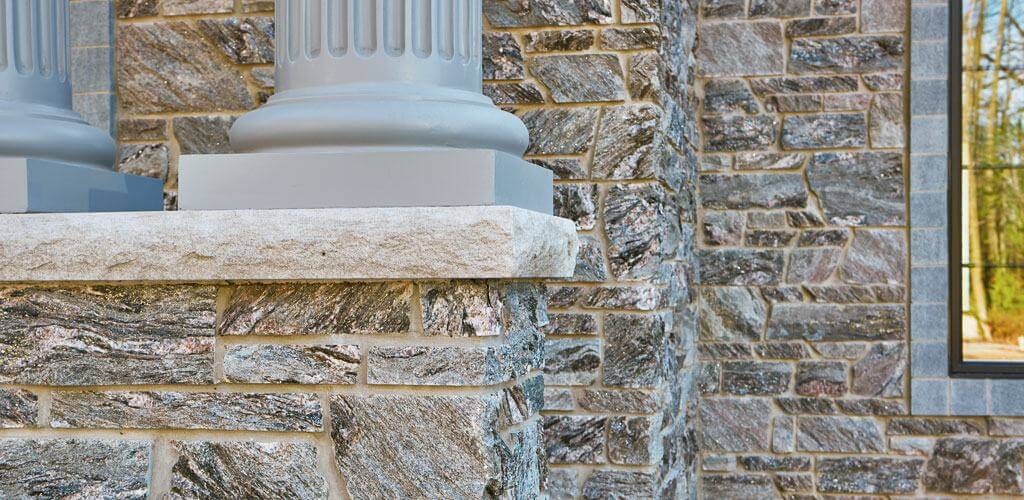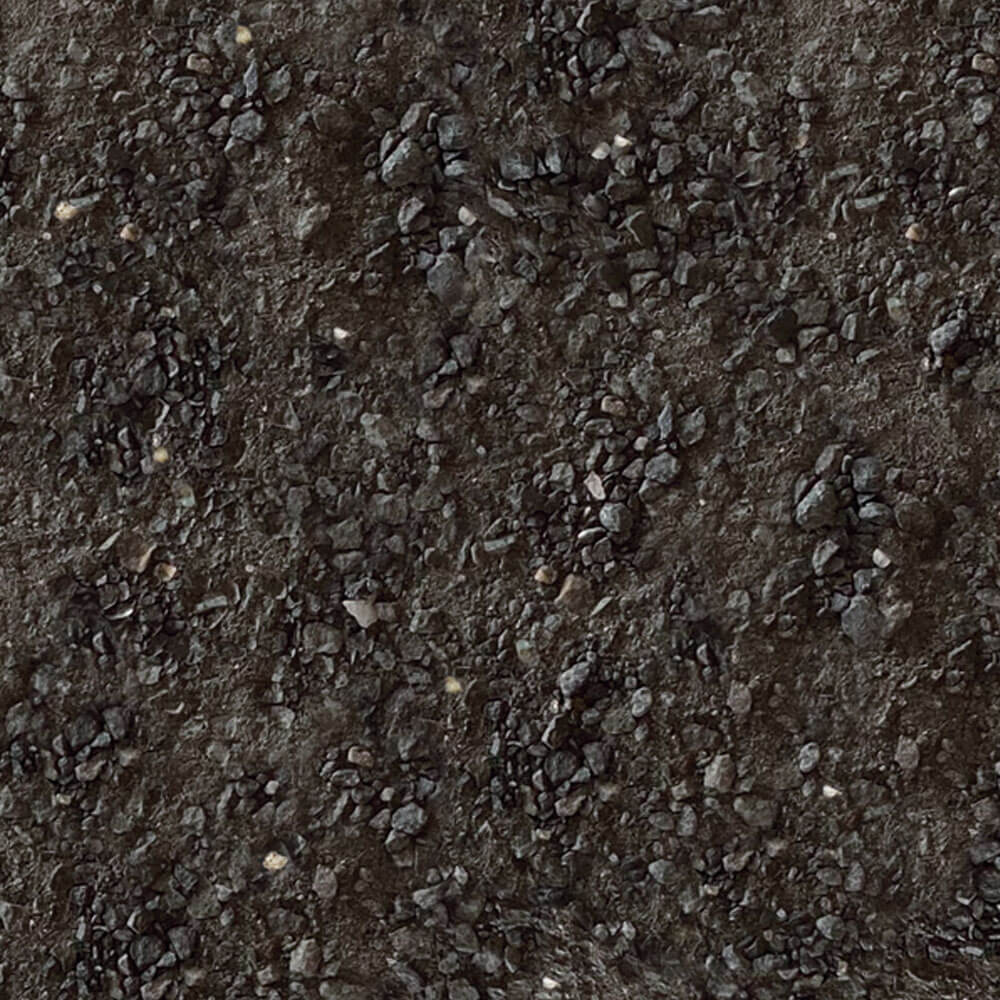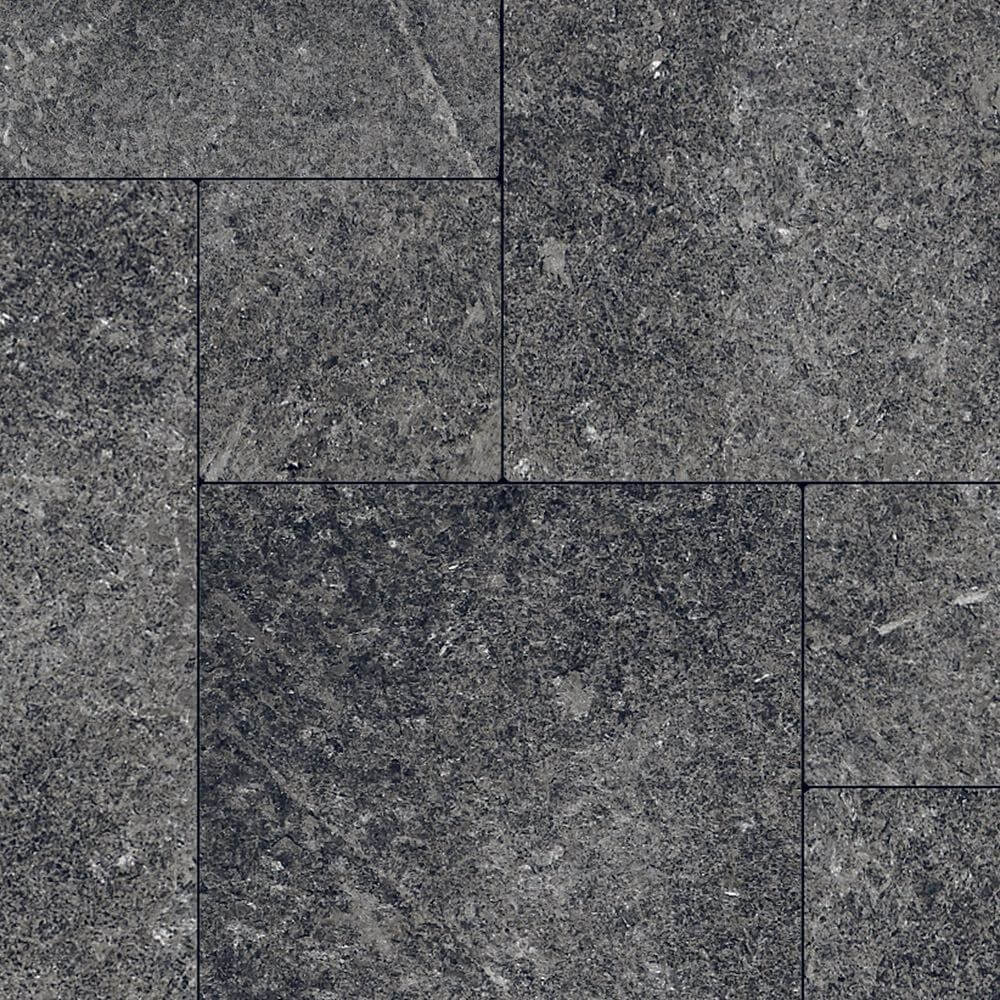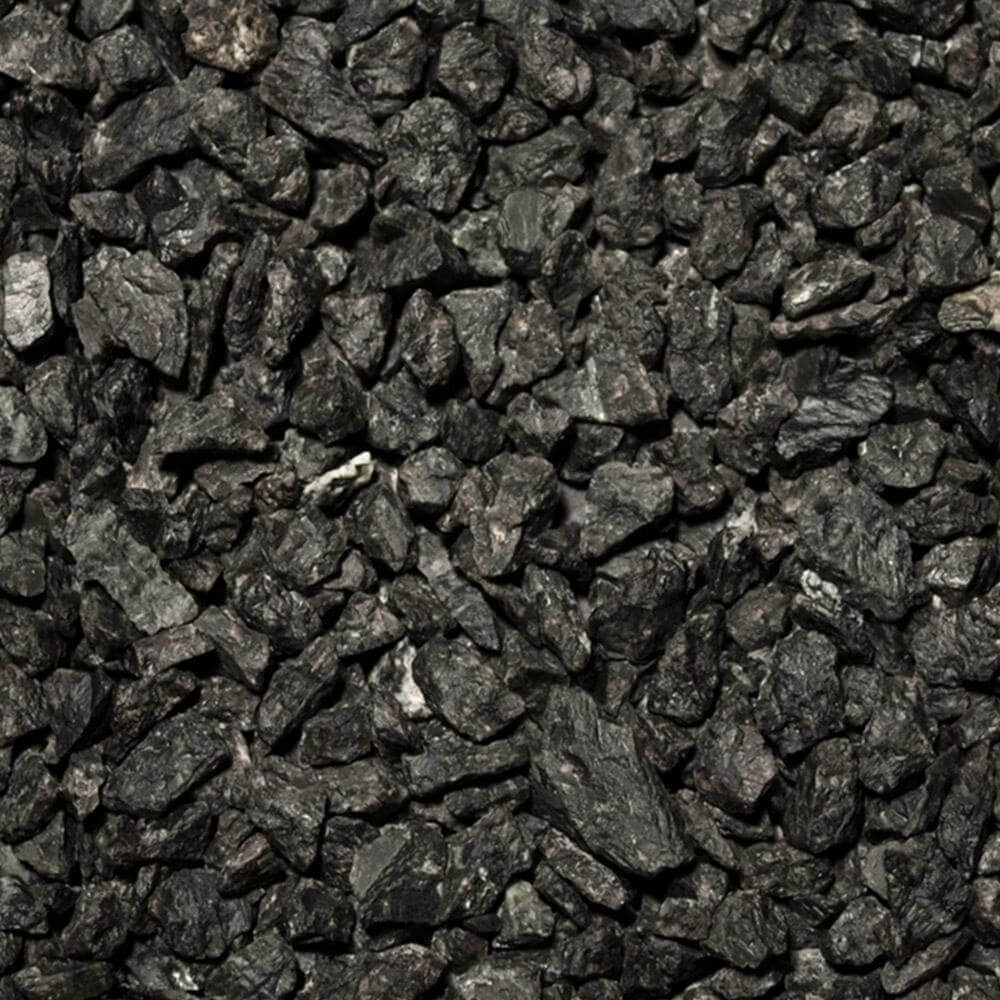When it comes to natural stone, few products are as versatile as thin stone veneer. This lightweight stone veneer is cut to a thickness of less than two inches, well under half the thickness of structural stone veneer, known as building stone or full-thickness stone. This shallow cut drastically changes the function of the product, reducing its weight while changing how it can be used.
Stone veneers are not structural, but rather a decorative finish that can adhere directly to substrates such as concrete, plywood, paneling and metal. This makes them ideal for a variety of interior and exterior applications, giving the look and feel of full-thickness stone without all the weight or structural concerns.
So how much does veneer weigh? A shallow profile gives thin stone veneer a weight of under 15 pounds per square foot. By contrast, building stone typically weighs 40-60 pounds per square foot. This substantial difference — of up to 75% less weight — has several major implications, including easier installation, less structural stress and greater versatility.
Advantages of Lighter Weight Stone
Easier Installation
Simply put, lighter materials are easier to handle. Thin stone veneer is far less cumbersome than full-thickness stone, which makes for more efficient — and less expensive — installation. The reduced weight of thin stone veneer also helps with other logistical issues, such as loading, unloading and transportation.
Less Structural Stress
Thin stone veneer typically causes less structural stress than building stone, meaning less substrate preparation is needed. Small to medium-sized projects often require no structural reinforcements at all. For larger applications, it’s best to consult an engineer to ensure the existing substrate will be able to sufficiently support the weight of the project.
Regardless of project size, if you have any concerns about your substrate or its ability to hold weight, it’s a good idea to consult a professional — such as a mason or engineer.
Versatility
With less burdensome weight to contend with, thin stone veneer can be used on a wide variety of indoor and outdoor surfaces.
Although most commonly featured around interior fireplaces and exterior facades, thin stone veneer is also used for a number of other applications — including feature walls, seat walls, columns, wine cellars, bars, kitchen islands, retaining walls, and outdoor kitchens, fireplaces and fire pits.
Important Structural Considerations
While thin stone veneer is lightweight and relatively easy to install, there are still several important structural considerations to make before starting your project. It’s essential to factor in the following:
- Check local building codes: Some areas may have specific weight restrictions for exterior cladding, or certain requirements for product installation.
- Consider height and wall structure: Taller installations will exert more pressure on the structure. Support walls should be made of at least 2-inch by 4-inch framing studs, with no more than 16 inches of spacing.
- Account for additional weight & anchoring systems: Be sure to factor in the weight of the adhesive, mortar, wire mesh and any other materials used during installation.
- Load-bearing capacity: Ensure the wall can support the combined weight of the veneer, adhesive, mortar and any other necessary materials. Different types of walls — such as wood, concrete and brick — will have their own unique load-bearing capacities.
- Waterproofing: To prevent moisture damage, it’s essential to waterproof outdoor applications. Using sealant can significantly reduce water absorption, helping to keep the structure dry and free of excess weight. Installing a proper water-resistive barrier (WRB) will allow for expansion and contraction — which can avoid cracks due to temperature changes.
- Ventilation and drainage: For applications subject to moisture, adequate ventilation and drainage is key. This helps to prevent moisture buildup behind the veneer, allowing for excess water to evaporate or drain away from the structure.
Cost Implications
Thin stone veneer typically has a higher upfront cost than traditional building stone, but its reduced weight allows for cost savings in other areas. Because it’s up to 75% lighter — while taking up a smaller footprint — it can be shipped and transported for less money.
And, as mentioned earlier, thin stone veneer can also be installed more efficiently. It takes significantly less effort to lift, arrange, shape, and adhere into place. Because of this, less man hours are required for the installation process.
There’s also another key consideration: saving on structural reinforcements. Since most thin stone veneer applications don’t require costly substrate preparation like concrete block, brick, or poured-over concrete, they can be installed with fewer additional costs than full-thickness stone.
Interested in learning more? Read about the full cost considerations of thin stone veneer.
Explore Thin Stone Veneer from Kafka
Now that you’re familiar with the weight and structural considerations of thin stone veneer, you’re ready to find the right natural stone solution for your project. Check out Kafka Granite’s unique selection of Natural Thin Stone Veneer products, available in a wide range of cuts and colors.
Still have questions? Reach out to Kafka’s knowledgeable sales representatives today. They’re happy to offer advice, direction, or help you discover the perfect thin stone veneer for your application.




